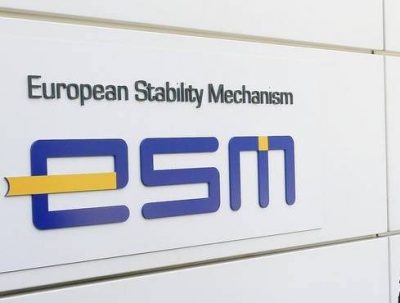All the busted accounts of Professor Baldassarri on Mes, Sure and Recovery Fund

Because what the economist Mario Baldassarri, former Deputy Minister of the Economy, wrote in the Sole 24 Ore, on maneuvering and coverage with Mes, Sure and Recovery Fund is not convincing. The comment by Giuseppe Liturri
We are living through difficult times, both from a health and economic point of view, with the first cause of the second. And so every day we greedily devour what is proposed to us by authoritative economists, looking for ideas of interest and possible solutions to mitigate the impact on the economy of the new restrictions on personal and business freedom adopted by the Government.
Among these, we point out the article signed by Professor Mario Baldassarri, former Deputy Minister of Economy, published in the Sole 24 Ore of 13 November.
But we must confess that, instead of nourishing hope, although starting from a correct and widely shared premise, it only contributes to increasing perplexities about the approximation of certain conclusions.
Baldassarri writes: “First of all, we should not repeat the mockery of the refreshments to businesses, indicating 2.5 billion in subsidies in the face of turnover losses of over 30 billion. Then, the government should rewrite the budget law, taking note of what is written in the Nadef in terms of the crisis scenario that has become basic and launching a 2021 maneuver of 100 billion and not 30 billion as announced in the Planning Document already sent to the Commission. These must contain 30 billion in public investments, 30 billion for health, 20 for schools and 20 for public transport.
As already indicated in the Dpb, 25 billion would be raised directly on the markets. For the others, 36 billion must come from the Mes, 20 billion from the Sure and 20 billion from the Recovery Fund ”.
We comment point by point on the most relevant excerpt:
- " The mockery of the refreshments ". Totally acceptable statement. Baldassarri joins the choir, last but not least (we recall the contribution of Professor Giovanni Tria , former Minister of the Economy). On these pages we have clearly explained the problem two weeks ago , as soon as the decree law 137 (Ristori) appeared in the Official Gazette. We welcome the professor.
- Baldassarri finally acknowledges that the budget law, based on the Nadef published at the beginning of October, has now to be rewritten. He proposes to significantly increase the deficit (with respect to the trend, an important element to underline) not by 30 billion (in reality in the DPB it would be 24, passing the deficit / GDP from 5.7% trend to 7% programmatic) but by 100 billion. That is, to increase the deficit / GDP by about 6/7 points, up to 12/13%. A little more than the figure we should record in 2020. This too can be widely shared and has already been asked in a loud voice here .
- Where it does not convince (to put it mildly) is where this major deficit is going. In particular, if the current annual expenditure for the National Health Fund is about 120 billion, adding 30 would mean increasing the fund by 25%. In the past, we have often highlighted the cuts and definancings that the FSN has suffered and therefore we have long hoped for an increase, but does Baldassarri really believe that it is actually possible to spend that additional amount in a year? Do you think hospitals can be built in a week or that it is possible to train a doctor or nurse so quickly?
- Where it really leaves us speechless is on the subject of coverage, where we detect three incredible "inaccuracies", perhaps dictated by the rush to rush to take European loans.
- Cover these higher expenses with the 36 billion of the Mes. Admitted and not granted that it is possible to effectively and quickly spend 30 billion on healthcare, Baldassarri cannot fail to know that the Mes only finances healthcare costs directly and indirectly connected to Covid. To date these have already been allocated for the three-year period 2020-2022 for about 9 billion and are obviously not all connected to Covid. If we do not report health costs to the ESM according to their criteria – which is the only condition set ex ante to access the ESM – we risk having to repay the loan. How can this condition be ignored?
- The proposal to use the 20 billion Sure is, if possible, even more unpresentable. In fact, Italy has requested and obtained loans for 27.4 billion (of which 10 have already been collected) to finance expenses ALREADY budgeted in 2020 and already partially incurred (Redundancy fund and various allowances for self-employed workers). So the Sure, not only cannot finance public investments, health care and more, but it has already been committed.
- Lastly, the 20 billion of the Recovery Fund. Given that it is not yet known if and when they will be available and payable, since the regulation is still in the initial negotiation phase, Baldassarri cannot fail to know that those funds will be strictly conditioned to the environmental and digital transition. We have some well-founded doubts that failing schools or our public transport infrastructure, such as highways or railways, can be financed with those loans and subsidies.
We leave it to the reader to draw conclusions.
This is a machine translation from Italian language of a post published on Start Magazine at the URL https://www.startmag.it/economia/tutti-i-conti-sballati-del-professor-baldassarri-su-mes-sure-e-recovery-fund/ on Fri, 13 Nov 2020 20:00:30 +0000.
